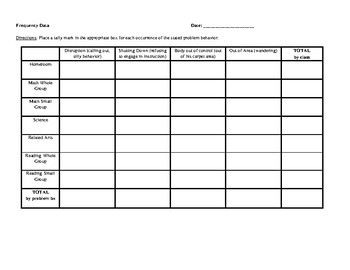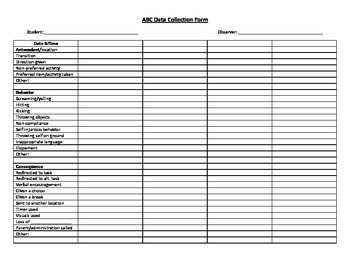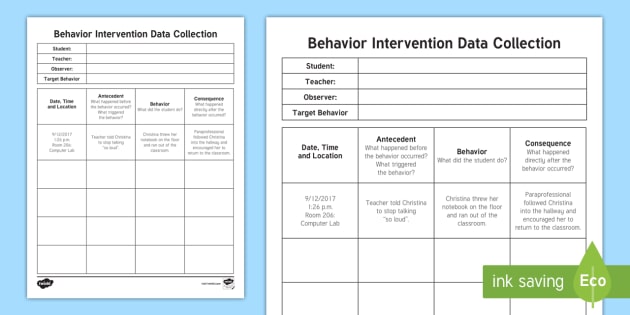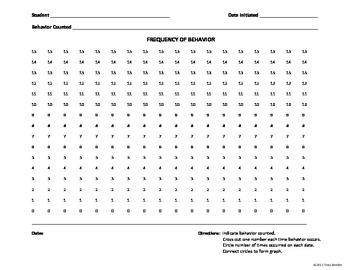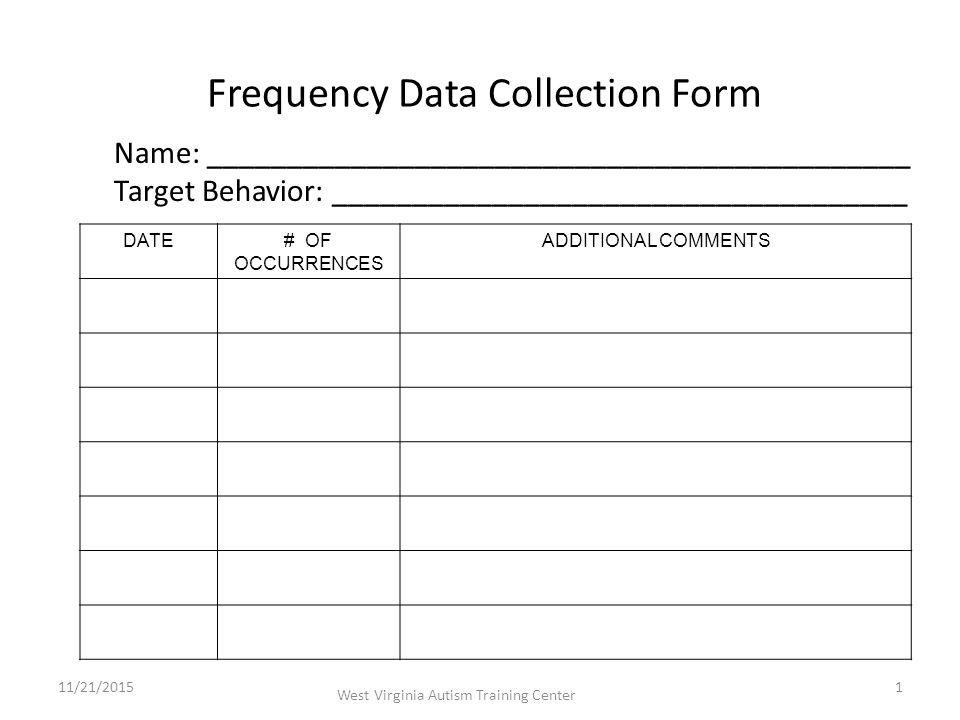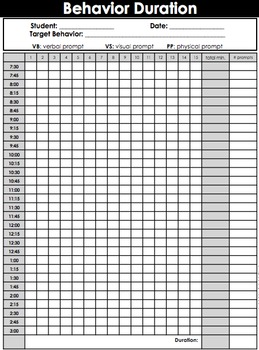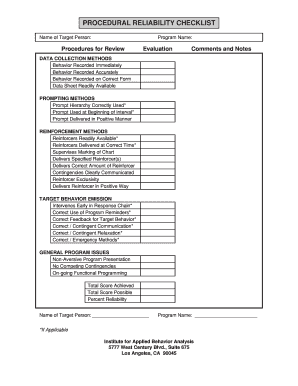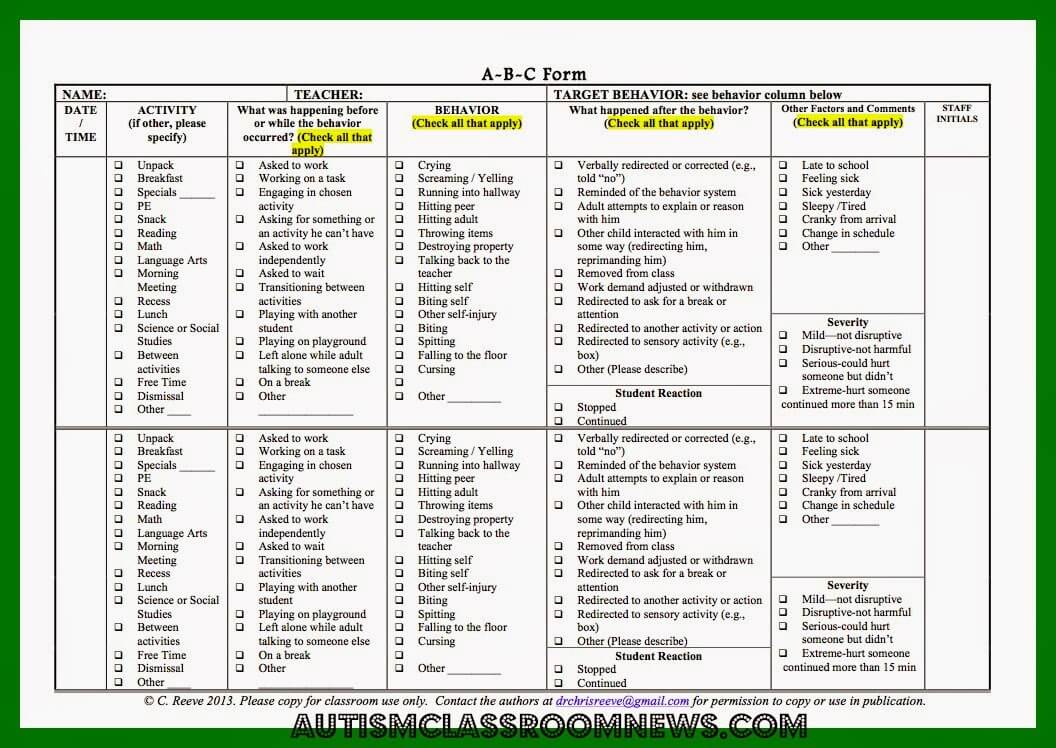Data Collection Template For Behaviors

Data collection resources these tools may support you in conducting functional behavior assessments and progress monitoring intervention efforts.
Data collection template for behaviors. Knoster and robin drogan these methods can be used in any classroom to help identify students who may need targeted behavior supports. We hope we can help you in organizing and interpreting information that will lead to a supportive and effective intervention. A b c data sheet blank from special connections. The forms below contain methods to obtain frequency intensity duration latency and abc antecedent behavior consequence data.
Data codes may be determined in a convenient way for users to indicate the childs performance level or the level of support needed. Excerpted and adapted from the teachers pocket guide for positive behavior support by tim p. Back to the top. A data collection rating scale.
Behaviors measured using event recording should be ones that occur for short periods of time and have a observable beginning and end. Data collection tools for everyday classroom use amir jacob jamie meisel and michelle weiner external rewards sometimes self monitoring is combined with an external reinforcement system where the student is rewarded for a achieving a high frequency of the specific behavior as well as recording the information appropriately. A target behavior may be analyzed and divided into small steps. Sample training rubric for staff general school observation form behavior chartsample sample playstations program my school daysample wearing glasses social story play date observation form types of prompts infographic staff statement of goals tips for creating an autism friendly classroom sample therapy session schedule school data sheetsample.
Abc data are intended to provide information pertaining to the potential functions the behaviors serve. Below are different forms that can be used for data collection. This may include marking tally marks on a designated data collection form using a counter or using a tangible object to track the number of events for example moving a paper clip from one pocket to another.


